Recent Publications by CBE Staff and Affiliates

Climate change, adaptation, resilience, mitigation—from the oceans to the Arctic—we are facing a whole new world in the 21st century. Center for the Blue Economy staff, Research Fellows, and Advisory Council members are an important part of that critical conversation.
Recent Publications
“Ocean Climate Policy: Building the Blue Economy in the Twenty-First Century,” in the Palgrave Handbook of Climate Resilient Societies
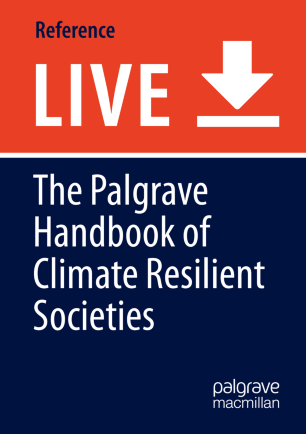
June, 2021: The global effort to create a blue economy – the creation of wealth from the oceans including the maintenance and growth of wealth from environmental and ecosystem resources – will be severely disrupted by climate change. Existing ocean industries will have to adapt to rising sea levels, warming, and ocean acidification. Attempts to repair damages to ecosystems from past activity will be made more difficult by shifting baselines. Beyond adaptation, ocean economic activity must participate in the global effort to dramatically reduce greenhouse gas emissions. But climate change will also bring some new opportunities for economic growth, including technological innovation and the opening of the Arctic. The policy responses to climate change’s effects on the blue economy will be dictated by a complex mix of global and local actions. Climate change’s effects are likely to cause disruptions that occur faster than existing institutions are designed to handle, necessitating organizational changes as a prerequisite to effective action. Information needs will escalate dramatically in the fields of physical, biological, and social systems and the interactions among these systems. There will also be a tendency to concentrate on local scale actions for adaptation, but if mitigation of climate change is not successful, most of the adaptation actions will prove temporary.
Chapter written by Dr. Charles Colgan, Director of Research at the Center for the Blue Economy and Dr. Jason Scorse, Director of the Center for the Blue Economy, part of The Palgrave Handbook of Climate Resilient Societies. Palgrave Macmillan, pages 1-22.
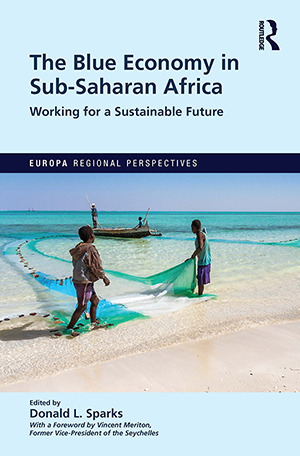
June, 2021: Of the 53 countries and territories that make up Sub-Saharan Africa, 32 are coastal states. There are 13 million square km of maritime zones, and more than 90% of the region’s exports and imports come by sea. This book provides, for the first time, a study of the constraints and opportunities the blue economy offers for sub-Saharan Africa.
Dr. Charles Colgan, Director of Research for the Center for the Blue Economy, and co-founder of the National Ocean Economics Program co-authored chapter 10, “Measuring the Blue Economy,” along with Vivian Louis Forbes and Iddi Mwanyoka. This chapter also stems from a research project funded by the World Wildlife Federation with Dr. Colgan as principle investigator setting a baseline for measuring the blue economies of Kenya and Tanzania. The final report from that study will be published in the fall of 2021. The Blue Economy in Sub-Saharan Africa: Working for a Sustainable Future, edited By Donald Sparks, published June 17, 2021 by Routledge.
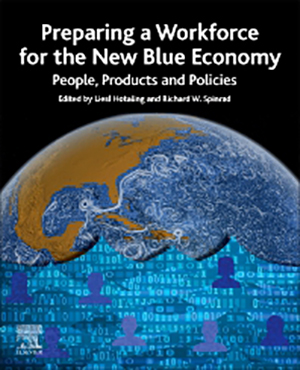
May, 2021: Dr. Judith Kildow, the co-founder of the National Ocean Economics Program, founding staff member at the Center for the Blue Economy, and current CBE Advisory Council member has authored a chapter in the publication Preparing a Workforce for the New Blue Economy: People, Products and Policies. The book discusses the Blue Economy, how the industry will develop, and how to train the next generation. The book considers the use of big data, key skillsets, training undergraduate and graduate students, the Transition Assistance Program (TAP) in the US, economic opportunities in African coastal countries, and governmental agencies, non-profits and NGO’s. Editors: Liesl Hotaling and Richard Spinrad, published by Elsevier, Chapter 8.
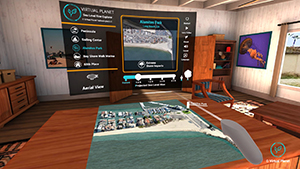
May 2021: As coastal communities around the globe contend with the impacts of climate change including coastal hazards such as sea level rise and more frequent coastal storms, educating stakeholders and the general public has become essential in order to adapt to and mitigate these risks. Researchers from the Middlebury Institute of International Studies at Monterey, the Virtual Human Interaction Lab and the Lemann Center at Stanford University, in a partnership with The Nature Conservancy (TNC), the City of Santa Cruz, and Virtual Planet Technologies announced today the publication of a groundbreaking study about the use of Virtual Reality (VR) in sea level rise planning and community engagement. The study, “Using Virtual Reality in Sea Level Rise Planning and Community Engagement—An Overview,” is part of the special issue of Water, a peer-reviewed journal on water science and technology, dedicated to adaptation to coastal climate change and sea-level rise.
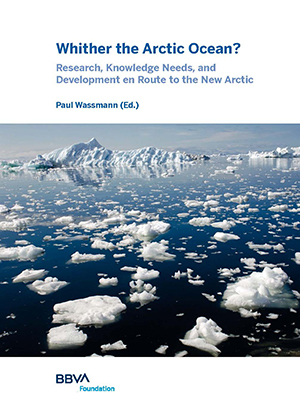
May, 2021: Dr. Brendan Kelly, Senior Fellow at the Center for the Blue Economy, Professor at the International Arctic Research Center, University of Alaska Fairbanks and Executive Director of the Study of Environmental Arctic Change has co-authored a chapter, “Complex Collaboration Tools for a Sustainable New Arctic,” in Whither the Arctic Ocean? Research, Knowledge Needs, and Development en Route to the New Arctic. Middlebury Institute alumna Andrea Fisher is the chapter co-author. She holds a Master’s Degree in International Environmental Policy with a specialization in Ocean and Coastal Resource Management, 2018, and is now pursuing a second masters degree in the Law of the Sea at the Arctic University of Norway. Whither the Arctic Ocean? Editor: Paul Wassmann, published by BBVA Foundation, pp43.
Upcoming Publication
“Oceans and Marine Resources,” in the Fifth National Climate Assessment
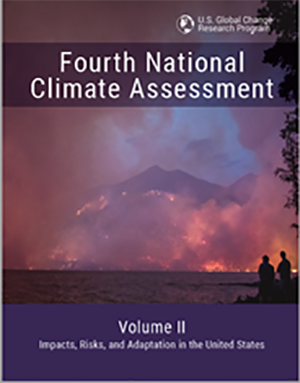
2023: The U.S. Global Change Research Program (USGCRP) is a federal program mandated by Congress to coordinate federal research and investments in understanding the forces shaping the global environment, both human and natural, and their impacts on society. In addition to an annual report to Congress and a Strategic Plan, the Global Change Research Act of 1990 mandates that USGCRP prepare and submit to the President and the Congress a quadrennial assessment, referred to as the National Climate Assessment (NCA). Dr. Charles Colgan, Center for the Blue Economy Director of Research, has been invited to co-author the Oceans and Marine Resources chapter of the Fifth National Climate Assessment, with anticipated delivery in 2023. Learn more: U.S. Global Change Research Program and the Fifth National Climate Assessment (NCA5).
Note: All descriptions are drawn from the report and book abstracts and those authors are hereby credited.
